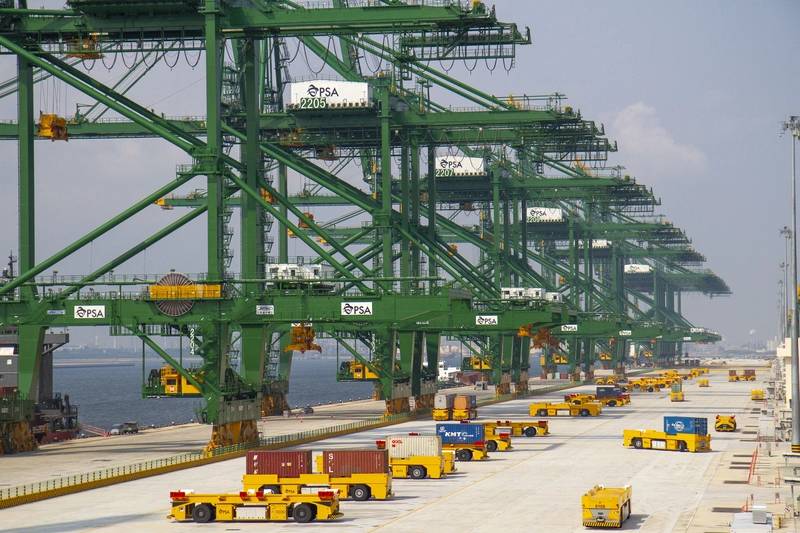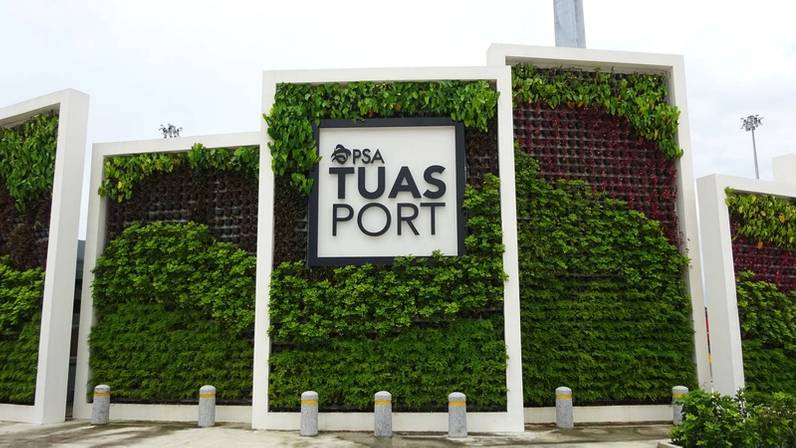

PSA Tuas Port is on the path to becoming the world’s largest automated container terminal, boasting an annual handling capacity of 65 million Twenty-Foot Equivalent Units (TEUs) once it reaches full operational capacity in the 2040s.
The inauguration of the first three berths during Phase One of its development in September 2022 marked a momentous milestone in Singapore’s maritime history, firmly establishing the nation as a global hub port powered by cutting-edge technologies.
Tuas Port has undergone a transformative journey by embracing automation and establishing an innovative command center to oversee its operations and maintenance. This has allowed the port to streamline its supply chain and provide enhanced support to PSA’s valued customers in managing cargo flows. As a crucial component of this digital transformation, event-driven architecture (EDA) was selected as the chosen backbone for the critical distribution of information. Ho Vee Leung, Regional Head IT, Southeast Asia at PSA Singapore, looks at how PSA’s adoption of EDA solidifies its position as a pioneer in the maritime industry.
Amidst the rapid expansion of global trade, ports today face mounting pressure to enhance their capabilities and streamline operations. Long-standing manual processes, while once sufficient, are now inadequate in meeting the escalating demands of the supply chain industry, such as real-time tracking, customer expectations, and the ever-important search for efficiency, productivity, and profit growth.
In recognizing the need for operational resilience and adaptability to maintain a competitive edge and accommodate future growth, PSA set out on a mission to build the world’s largest fully automated port. Known as Tuas Port, the project marks a significant milestone for Singapore as it ushers in a new era for PSA Singapore’s operations, and reaffirms the nation’s stature as a global maritime hub.
The first phase of Tuas Port opened in September 2022, with the entire port to be completed by 2040. When completed, Singapore’s handling capacity will be doubled, and the port will be able to service vessels more than 400m in length. It will also work in tandem with the airport, to strengthen the current connection between the nation’s air and seaports, allowing the economy to benefit from greater trade volumes.
In the meantime, Tuas Port has now grown to eight berths, which have increased Singapore’s handling capacity amidst the supply chain crisis of past years. Most of the work at the port is performed by unmanned driverless vehicles known as Automated Guided Vehicles (AGV), while creating new job opportunities for the 500 people that currently work there. Aligned with its goal of becoming the world’s largest automated container terminal, the port also plans to implement artificial intelligence, data analytics, robotics and other applications to bolster the nation’s maritime prominence.
To support this massive undertaking, PSA turned to an event-driven architecture (EDA) platform – underpinned by Solace – to orchestrate the port’s automated operations and maintenance activities.
EDA is an approach where interconnected systems, devices, and processes exchange real-time event-based information such as vessel arrivals, container movements, and equipment status changes through an interconnected web of event brokers. This ‘event mesh’ empowers ports to optimize their resource allocation, make informed decisions ahead of time, and effectively streamline workflows, which can ultimately boost their overall productivity and effectiveness across their port operational processes.
 Image courtessy PSA Tuas Port
Image courtessy PSA Tuas Port
At Tuas Port, the world’s largest fleet of over 200 AGVs, transports containers within the port 24 hours a day, 7 days a week in a port that never sleeps. Regular transmission of instructions to each AGV are crucial for port operations and this is achieved through the adoption of Solace PubSub+ to provide timely and reliable event delivery at scale. By harnessing the power of EDA, Tuas Port gains the ability to process vital data as events unfold, facilitating timely and informed decision-making. Acting as a resilient “shock absorber”, EDA ensures the seamless flow of information, guaranteeing in-order delivery of data, even during temporary disconnections or message flow surges. Unlike the traditional request-response systems, EDA empowers Tuas Port with real-time data processing and instant communication capabilities, which ensures uninterrupted operations and dependable communication channels, bolstering Tuas Port’s overall efficiency. For example, with port operations spanning various hybrid environments, devices, and applications, a holistic and comprehensive event mesh is required to distribute data in real-time, ensuring that each one can perform effectively.
PSA expects to more than double the AGV fleet as Tuas Port evolves through its subsequent development phases, and the impact of EDA will continue to reshape port operations, setting a new standard for efficiency, adaptability, and customer satisfaction in the maritime industry.
Naturally, such a transformative opportunity doesn’t happen without some challenges. During Phase One of the development at Tuas Port, several complexities emerged, including designing AGVs to have an always on communications design able to handle faults at various layers of the technology stack. This was eventually achieved through frameworks provided by Solace to enable full control over the switchover process. Navigating these obstacles necessitates strategic collaboration with our technology partners, seeking solutions that cater to PSA’s requirements.
As Tuas Port’s automation progresses and real-time data generation is amplified, the existing networks and architectures must be resilient and scalable to accommodate the influx of information. By addressing integration complexities and investing in a robust infrastructure, we can then fully unlock the potential of EDA and drive greater efficiency and customer satisfaction in the global landscape, particularly as Tuas Port embarks on three more development phases.
According to Robert Chin, PSA’s Assistant Vice President, IT Governance & Infrastructure Planning, it is a complex undertaking to reliably orchestrate operations across container handling equipment connected over cellular networks, WiFi and other networks reliably in the port environment. Solace continues to be alongside PSA in delivering a robust and simple to maintain EDA platform for data communications as we continue our vision to deliver reliable operations at scale.
With the successful integration of EDA, PSA Tuas Port has set the new standard for port automation as the world’s largest automated container terminal. This achievement highlights the pivotal role of EDA in reshaping the maritime industry and connecting communities beyond the port, both physically and digitally integrated with local and global supply chain ecosystems.
Moving forward, PSA Tuas Port is well-positioned to navigate the challenges and opportunities that lie ahead as the maritime landscape continues to evolve and automate.



